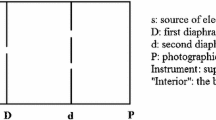Abstract
A simple argument proposes a direct link between realism about quantum mechanics and one kind of metaphysical holism: if elementary quantum theory is at least approximately true, then there are entangled systems with intrinsic whole states for which the intrinsic properties and spatiotemporal arrangements of salient subsystem parts do not suffice. Initially, the proposal is compelling: we can find variations on such reasoning throughout influential discussions of entanglement. Upon further consideration, though, this simple argument proves a bit too simple. To get such metaphysically robust consequences out, we need to put more than minimal realism in. This paper offers a diagnosis: our simple argument seems so compelling thanks to an equivocation. The predictions of textbook quantum theory already resonate with familiar holistic slogans; for realists, then, any underlying reality, conforming to such predictions, also counts as holistic in some sense or other, if only by association. Such associated holism, though, does not establish the sort of specific, robust supervenience failure claimed by our simple argument. While it may be natural to slide to this stronger conclusion, facilitating the slide is not minimal realism per se but an additional explanatory assumption about how and why reality behaves in accordance with our theory: roughly, quantum theory accurately captures patterns in the features and behaviors of physical reality because some underlying metaphysical structure constrains reality to exhibit these patterns. Along with the diagnosis comes a recommendation: we can and should understand one traditional disagreement about the metaphysics of entanglement as another manifestation of a familiar and more general conflict between reductive and non-reductive conceptions of metaphysical theorizing. Such reframing makes clearer what resources reductionists have for resisting the simple argument’s challenge from quantum holism. It also has an important moral for their opponents. Traditional focus on whole-part supervenience failure distracts from a root disagreement about metaphysical structure and its role in our theorizing. Non-reductionists fond of our simple argument would be better off tackling this root directly.
Similar content being viewed by others
Notes
Note that I am using “reductive” to label views that affirm the sort of whole-part supervenience denied by intrinsic non-supervenience. “Reductive” sometimes has stronger connotations: not only do wholes supervene on parts, but parts are—for instance—more fundamental grounds of the supervening wholes. Whole-part supervenience is a necessary condition for this stronger view.
References
Arntzenius, F. (2012). Space, time, and stuff. Oxford: Oxford University Press.
Beebee, H. (2000). The non-governing conception of laws of nature. Philosophy and Phenomenological Research, 61(3), 571–594.
Bell, J. (1964). On the Einstein–Podolsky–Rosen paradox. Physics, 1, 195–200. (reprinted in Bell (2004) 14–28).
Bell, J. (1981). Bertlmann’s socks and the nature of reality. Journal de Physique, 42, 41–61. (reprinted in Bell (2004), 139–158).
Bell, J. (2004). Speakable and unspeakable in quantum mechanics. Cambridge: Cambridge University Press.
Bhogal, H., & Perry, Z. (2017). What the humean should say about entanglement. Noûs, 51(1), 74–94.
Callender, C. (2015). One world, one beable. Synthese, 192(10), 3153–3177.
Darby, G. (2012). Relational holism and humean supervenience. British Journal for the Philosophy of Science, 63(4), 773–788.
Dewar, N. (unpublished ms). La Bohume.
Dürr, D., Goldstein, S., Tumulka, R., & Zanghì, N. (2009). Bohmian mechanics. In D. Greenberger, K. Hentschel, & F. Weinert (Eds.), Compendium of quantum physics (pp. 47–55). New York: Springer.
Dürr, D., Goldstein, S., & Zanghì, N. (1992). Quantum equilibrium and the origin of absolute uncertainty. Journal of Statistical Physics, 67(5–6), 843–907.
Egg, M., & Esfeld, M. (2015). Primitive ontology and quantum state in the GRW matter density theory. Synthese, 192(10), 3229–3245.
Esfeld, M. (2014). Quantum humeanism, or: physicalism without properties. Philosophical Quarterly, 64, 453–470.
Goldstein, S., Norsen, T., Tausk, D., & Zanghì, N. (2011). Bell’s theorem. Scholarpedia, 6(10), 8378.
Hall, N. (unpublished ms). Physical and metaphysical modality.
Healey, R. (1991). Holism and nonseparability. Journal of Philosophy, 88(8), 393–421.
Ismael, J., & Schaffer, J. (2016). Quantum holism: nonseparability as common ground. Synthese. https://doi.org/10.1007/s11229-016-1201-2.
Kim, J. (1993). Postscripts on supervenience. In Supervenience and mind: Selected philosophical essays (pp. 161–171). Cambridge: Cambridge University Press.
Lewis, D. (1983). Extrinsic properties. Philosophical Studies, 44(2), 197–200.
Lewis, D. (1987). Philosophical papers (Vol. II). Oxford: Oxford University Press.
Loewer, B. (1996). Humean supervenience. Philosophical Topics, 24(1), 101–127.
Maudlin, T. (1998). Part and whole in quantum mechanics. In E. Castellani (Ed.), Interpreting bodies (pp. 46–60). Princeton: Princeton University Press.
Maudlin, T. (2007). Why be humean? The metaphysics within physics (pp. 50–77). Oxford: Oxford University Press.
Maudlin, T. (2012). Philosophy of physics: Space and time. Princeton, NJ: Princeton University Press.
Miller, E. (2014). Quantum entanglement, Bohmian mechanics, and humean supervenience. Australasian Journal of Philosophy, 92(3), 567–583.
Miller, E. (2016). Quantum holism. Philosophy Compass, 11(9), 507–514.
Ney, A. (2015). Fundamental physical ontologies and the constraint of empirical coherence. Synthese, 192(10), 3105–3124.
Schaffer, J. (2010). Monism: The priority of the whole. Philosophical Review, 119(1), 31–76.
Suárez, M. (2015). Bohmian dispositions. Synthese, 192(10), 3203–3228.
Teller, P. (1989). Relativity, relational holism, and the bell inequalities. In J. Cushing & E. McMullin (Eds.), Philosophical consequences of quantum theory: Reflections on Bell’s theorem (pp. 208–223). Notre Dame, IN: University of Notre Dame Press.
Acknowledgements
For feedback on earlier presentations of this work, I thank audiences from the University of Cologne, Harvard University, the 2017 Philosophy Mountain Workshop, University College London’s Institute of Advanced Studies, and Yale University; particular thanks to Selim Berker, George Darby, Michael Della Rocca, Nina Emery, Ned Hall, Mark Richard, Bryan Roberts, Brad Skow, Zeynep Soysal, Mauricio Suárez, Elanor Taylor, Alastair Wilson, and (at least) two anonymous referees.
Author information
Authors and Affiliations
Corresponding author
Rights and permissions
About this article
Cite this article
Miller, E. Two notions of holism. Synthese 197, 4187–4206 (2020). https://doi.org/10.1007/s11229-018-1710-2
Received:
Accepted:
Published:
Issue Date:
DOI: https://doi.org/10.1007/s11229-018-1710-2




